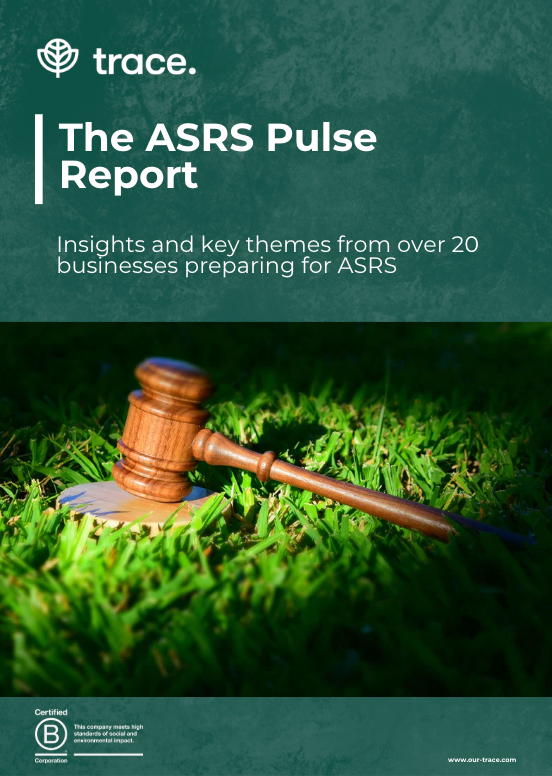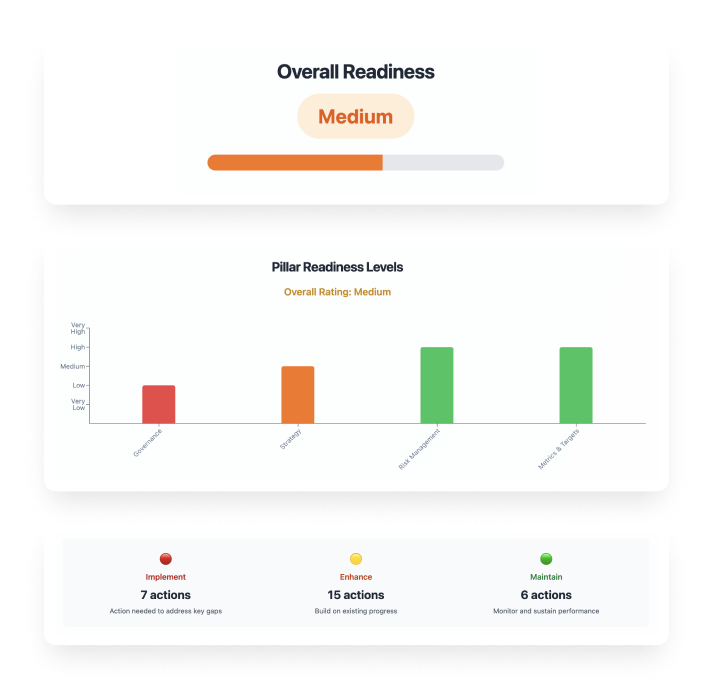Climate risk can’t live in a sustainability report — it belongs in the same room as finance, strategy, and operations.
The most effective organisations treat climate risk as part of everyday decision-making, not a separate project. Under IFRS S2 / ASRS S2, that’s exactly what’s expected.
At Trace, we help teams move from siloed spreadsheets to a connected, system-wide approach where climate risk becomes business risk — managed, measured, and acted on.
1. Why Integration Matters
Fragmented climate data leads to fragmented action.
When climate risks sit outside your main risk or planning systems, they’re easy to overlook. Integration brings benefits:
- Consistency: Everyone works from the same definitions and datasets.
- Efficiency: One process supports both internal decisions and external disclosure.
- Credibility: Investors and regulators see climate risk managed like any other material issue.
2. Where to Integrate Climate Risk
- Risk Management - Include physical & transition risks in risk registers and appetite statements.
- Strategic Planning - Stress-test growth plans under 1.5 °C – 3 °C scenarios.
- Capital Allocation - Weigh climate exposure when approving new assets or M&A.
- Procurement & Supply Chain - Assess supplier exposure to physical risk and policy change.
- Reporting & Disclosure - Align internal tracking with IFRS S2 metrics and narrative.
3. Making Integration Work in Practice
- Start with material risks. Use your climate risk assessment to identify the handful that truly matter.
- Connect your data. Link emissions, location, and financial data so insights can flow into dashboards and planning tools.
- Define ownership. Assign clear responsibilities within existing risk and finance teams.
- Embed in processes. Add climate checkpoints to capital approvals, supplier onboarding, and strategy reviews.
- Review regularly. Update data and assumptions annually to stay aligned with evolving scenarios.
4. From Compliance to Competitive Advantage
When climate data informs day-to-day choices, it becomes a source of value - revealing efficiency opportunities, resilient investments, and new customer trust.
Integration isn’t just good governance - it’s smart business.
5. Key Takeaways
- Climate risk integration turns disclosure into everyday management.
- Align climate considerations with risk, finance, and strategy functions.
- Use consistent data and clear accountability to stay audit-ready.
Trace’s vision: help businesses treat climate risk like any other strategic risk - continuous, connected, and actionable.
.png)



